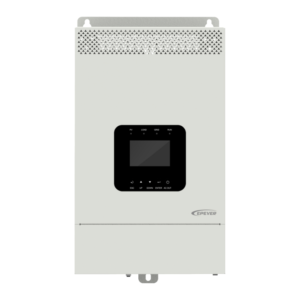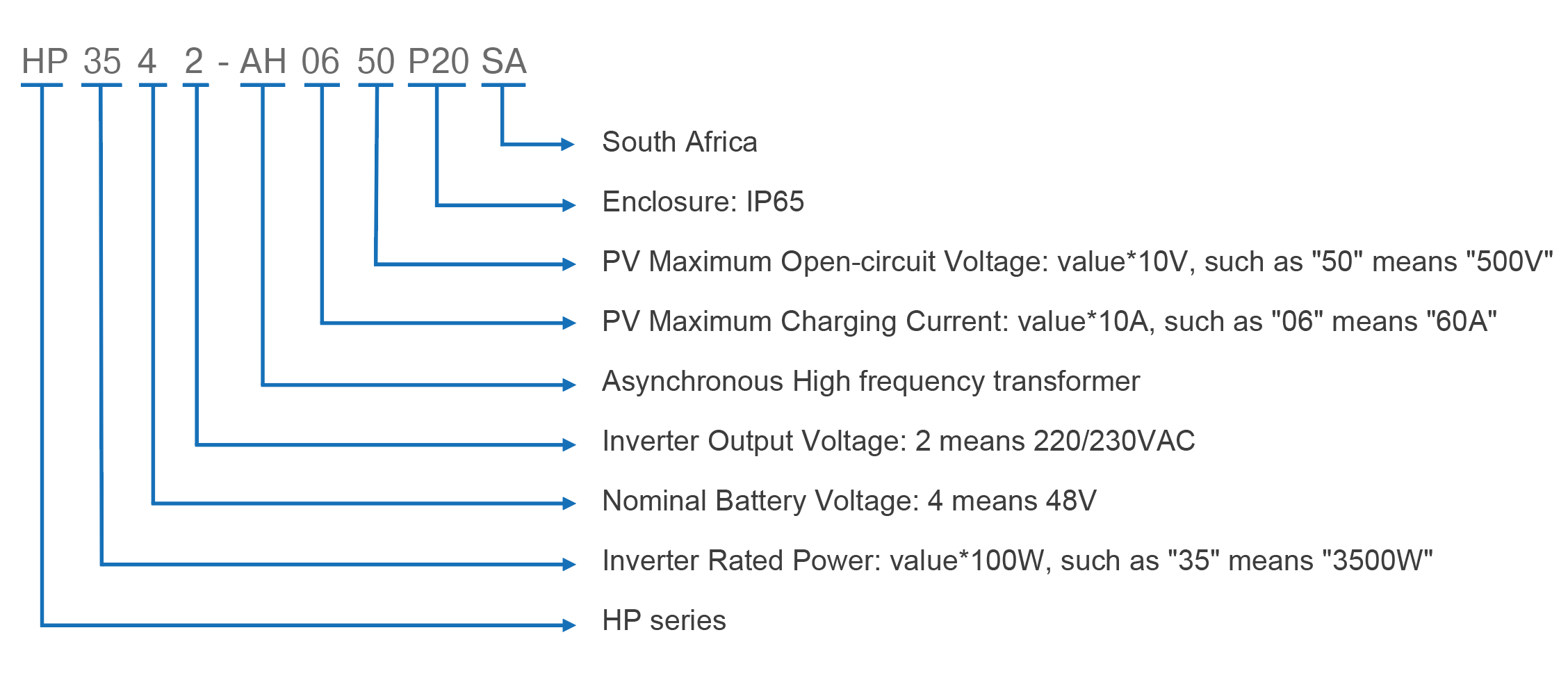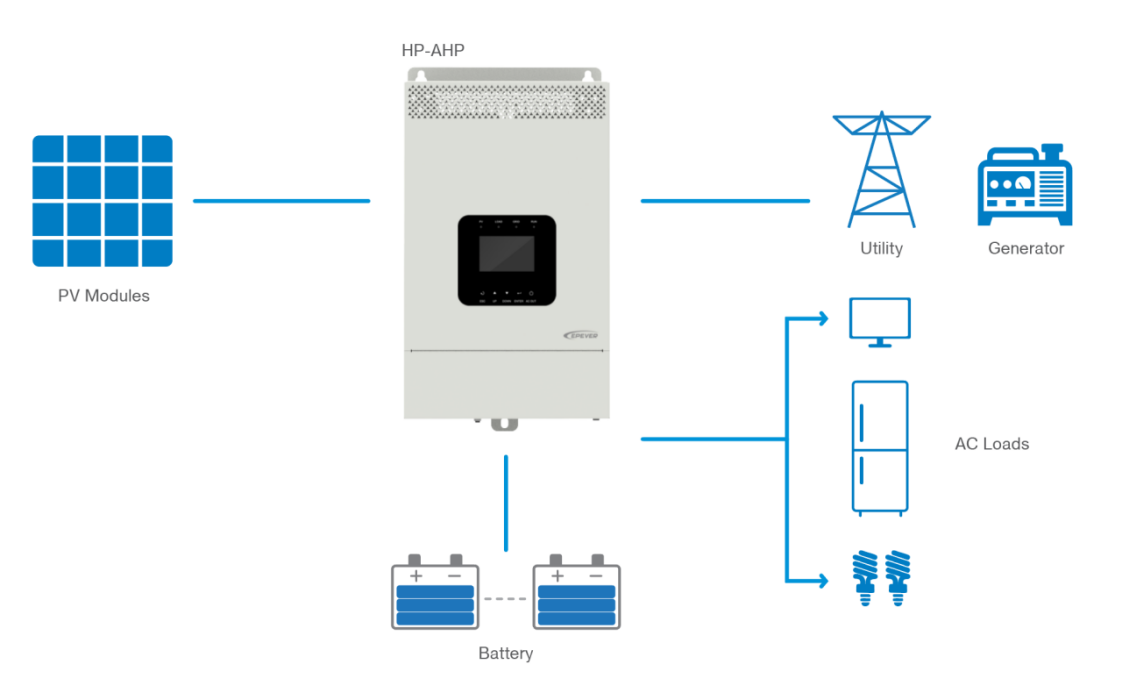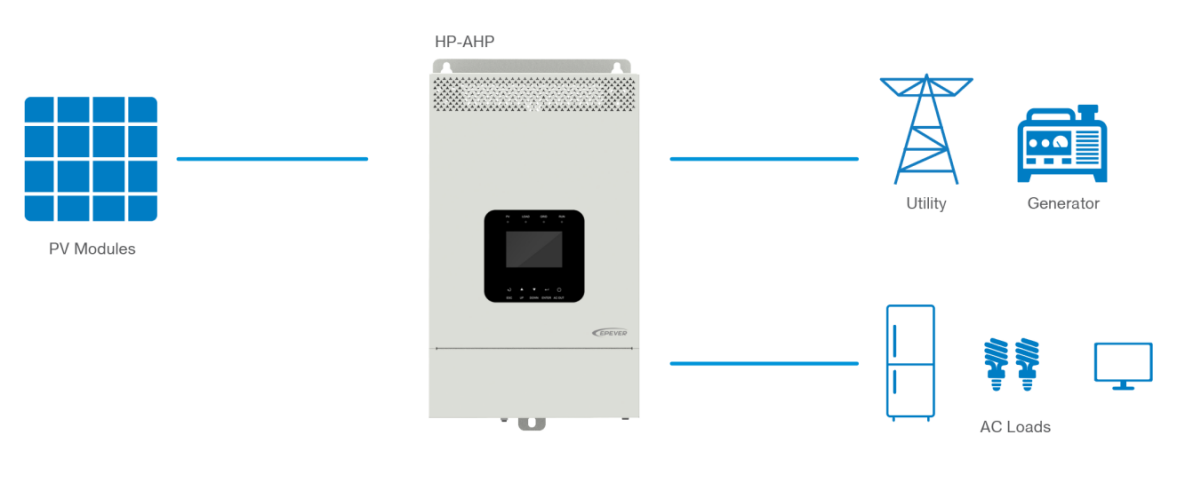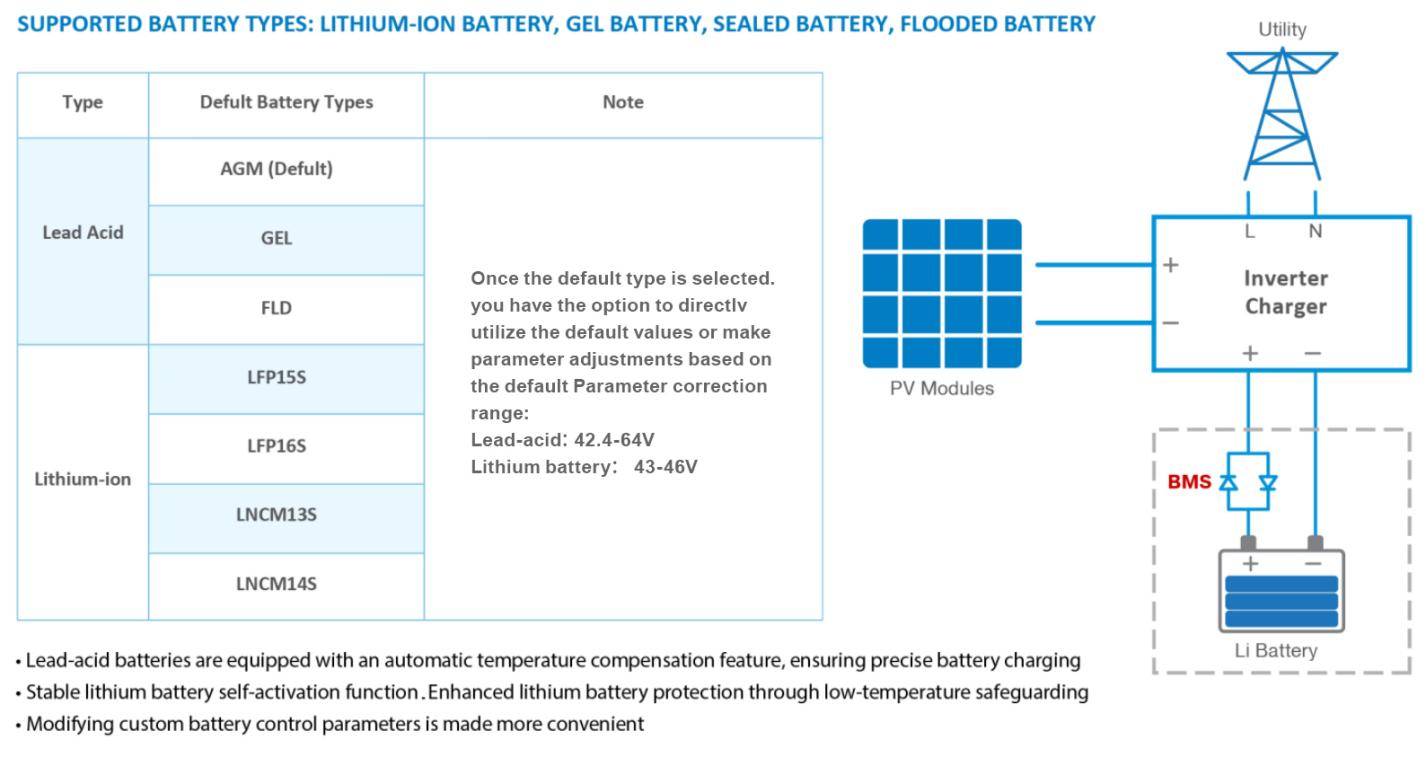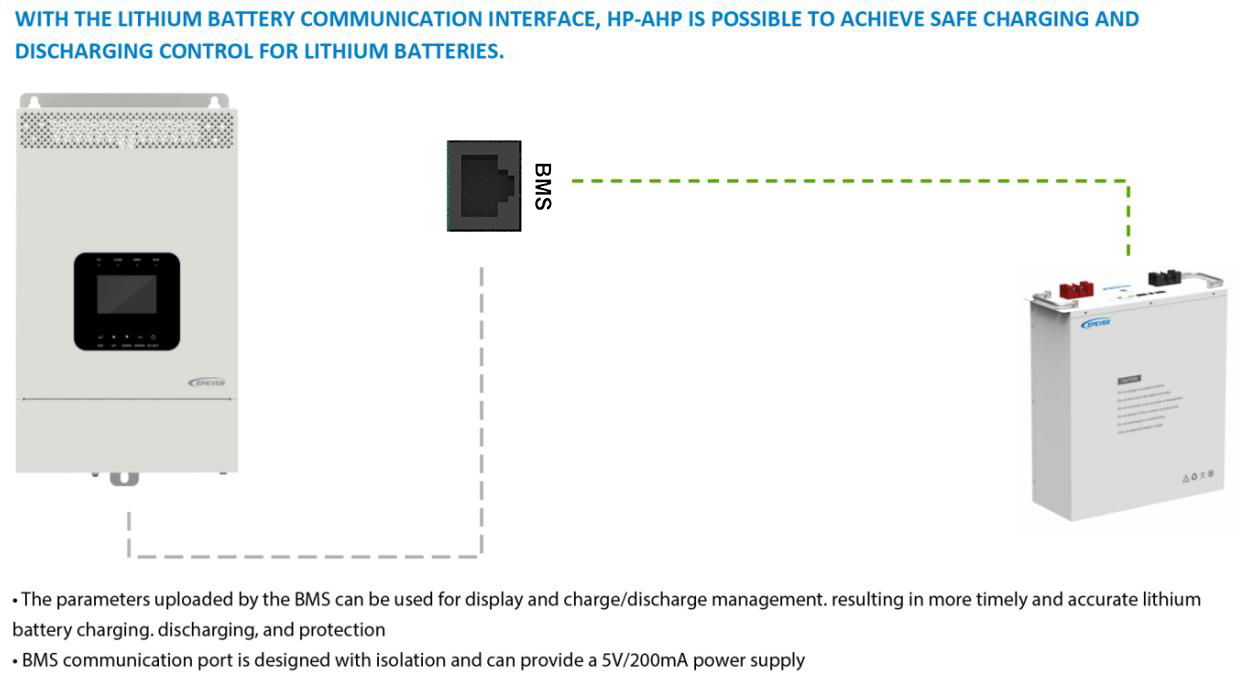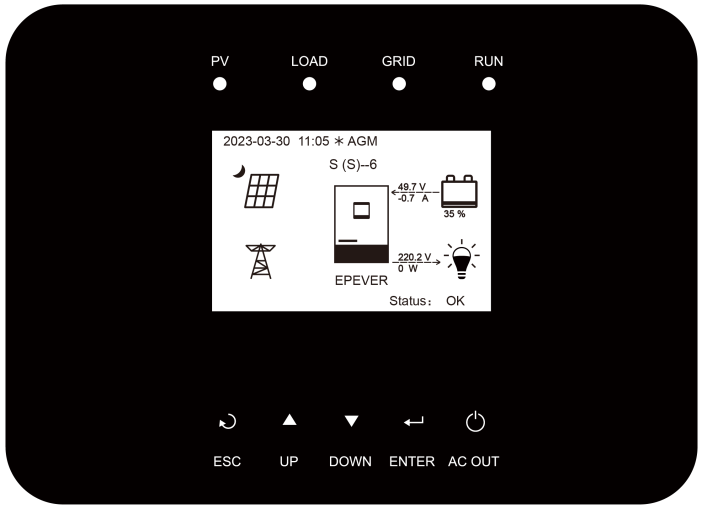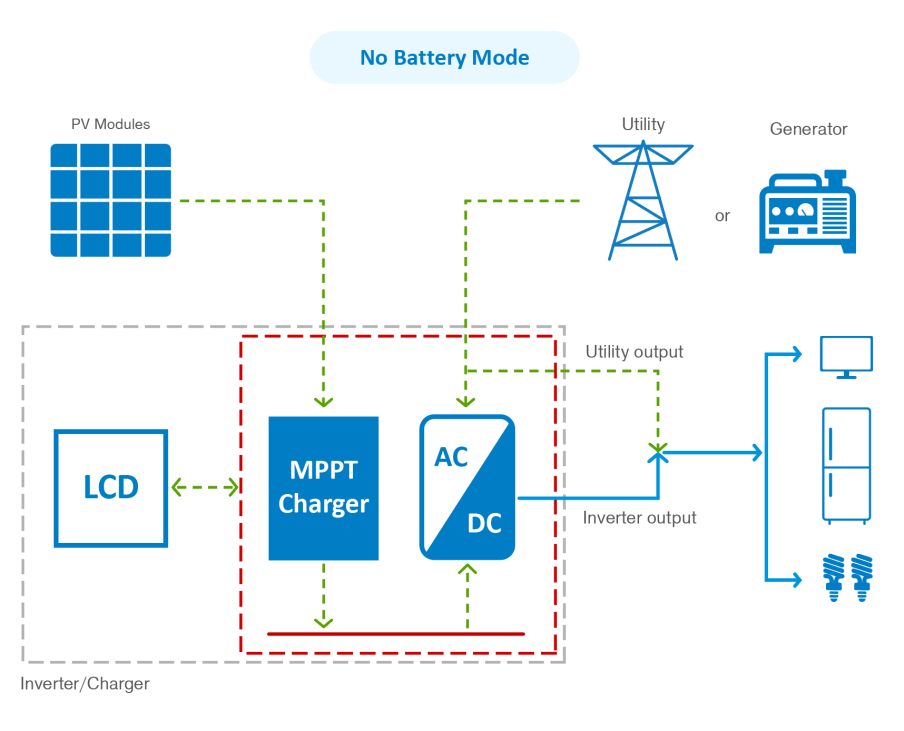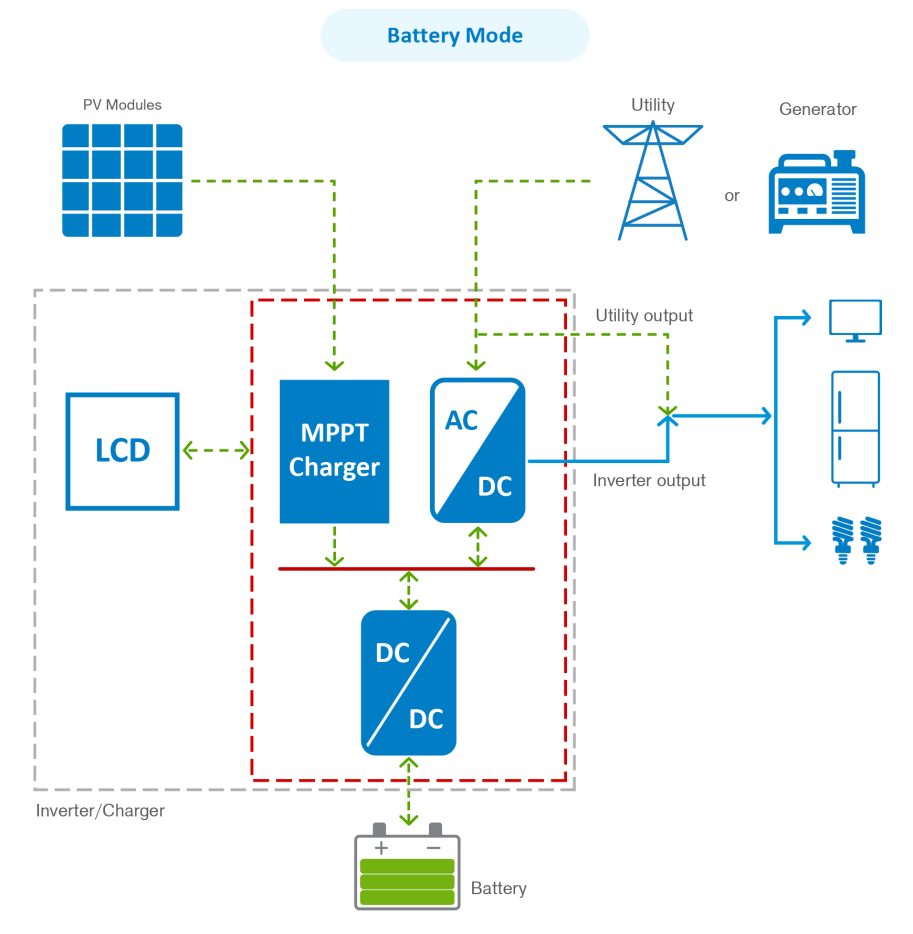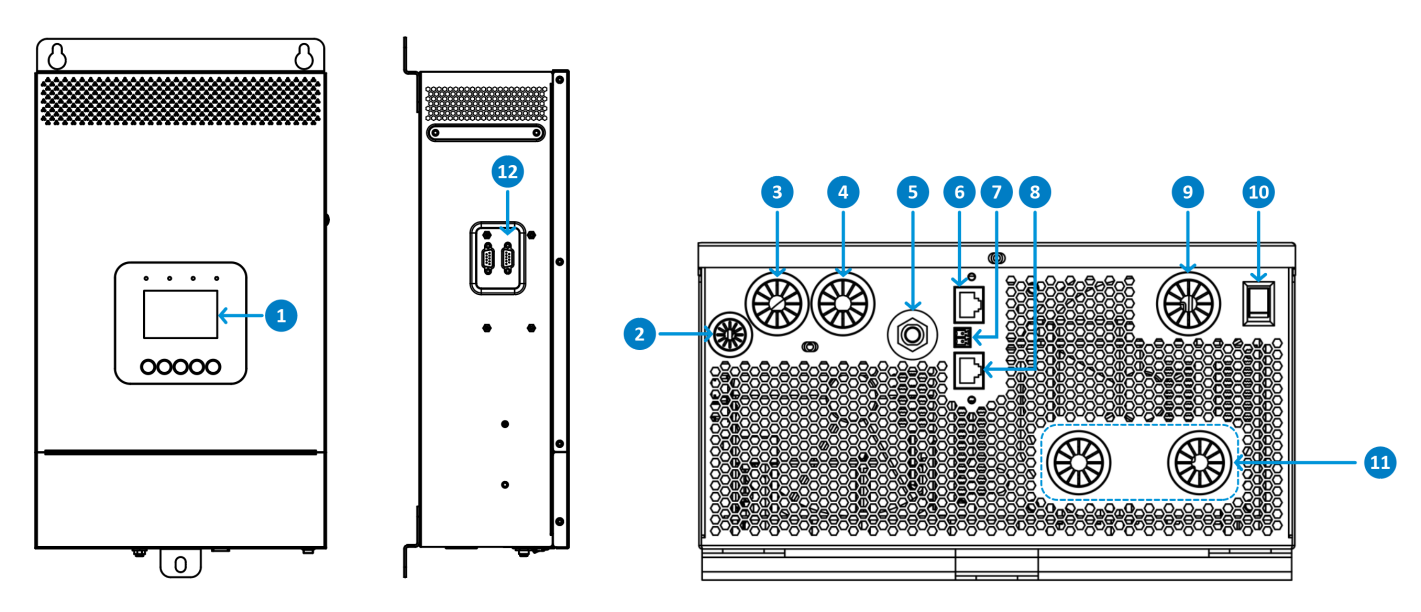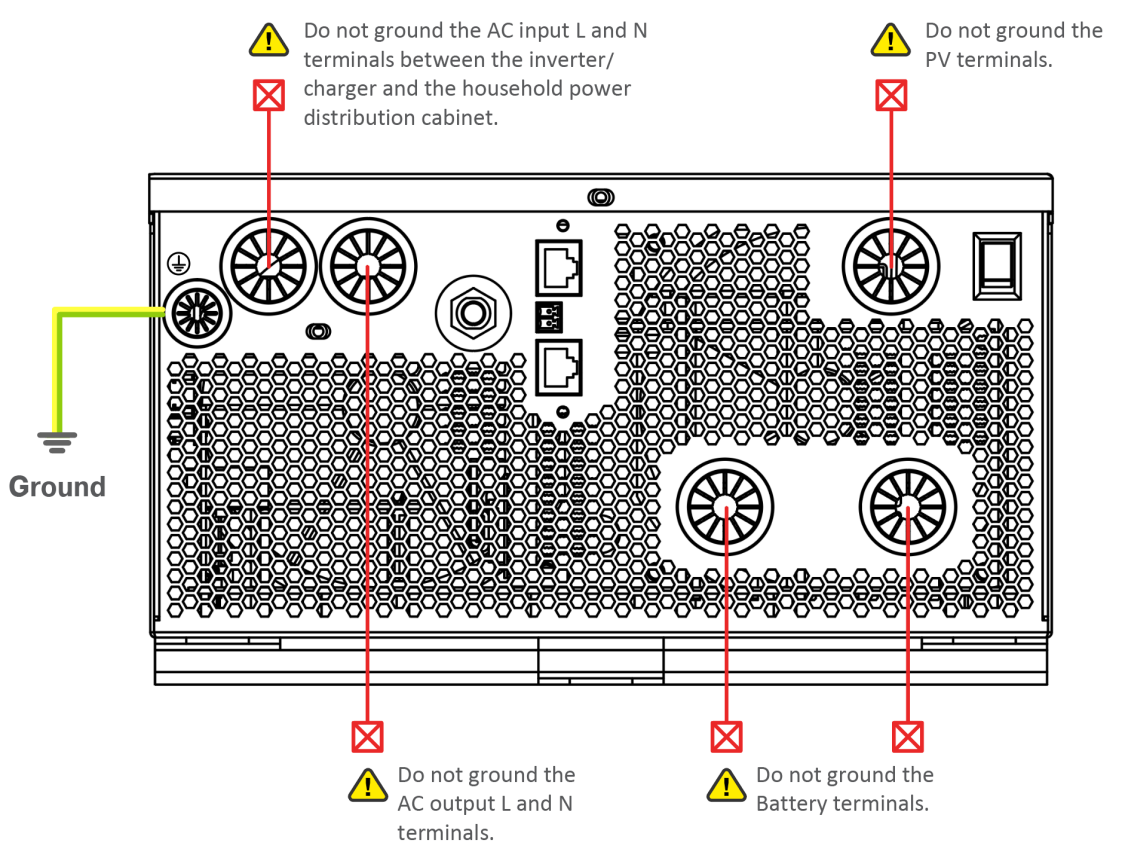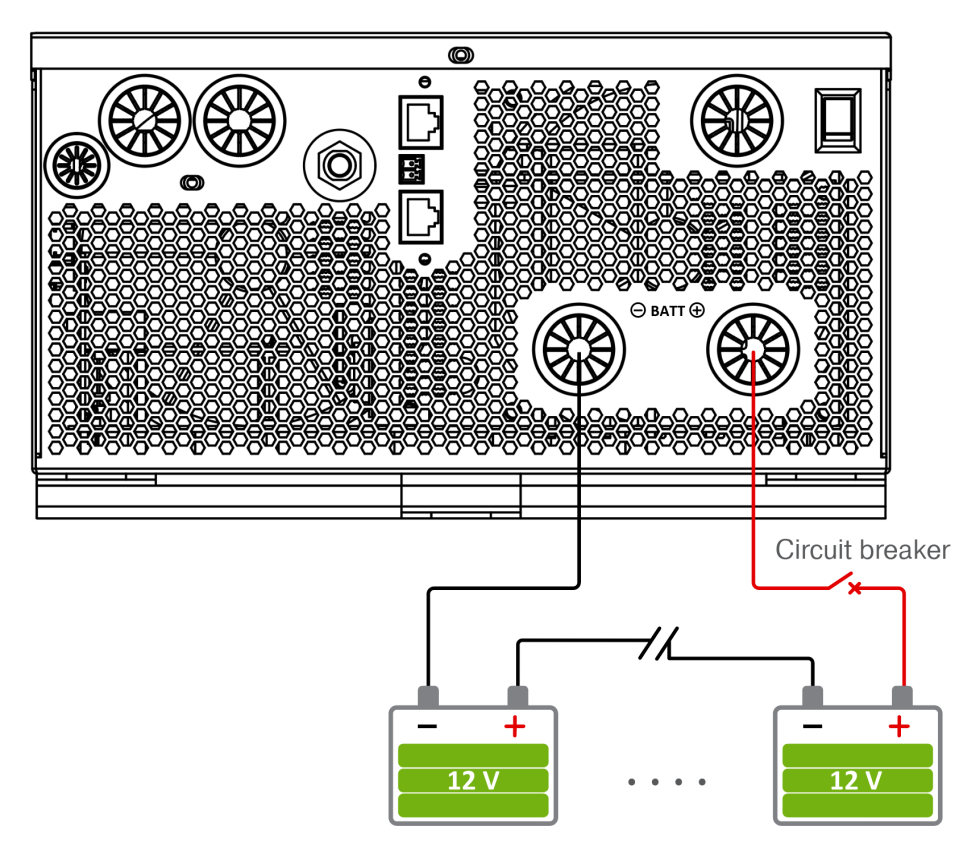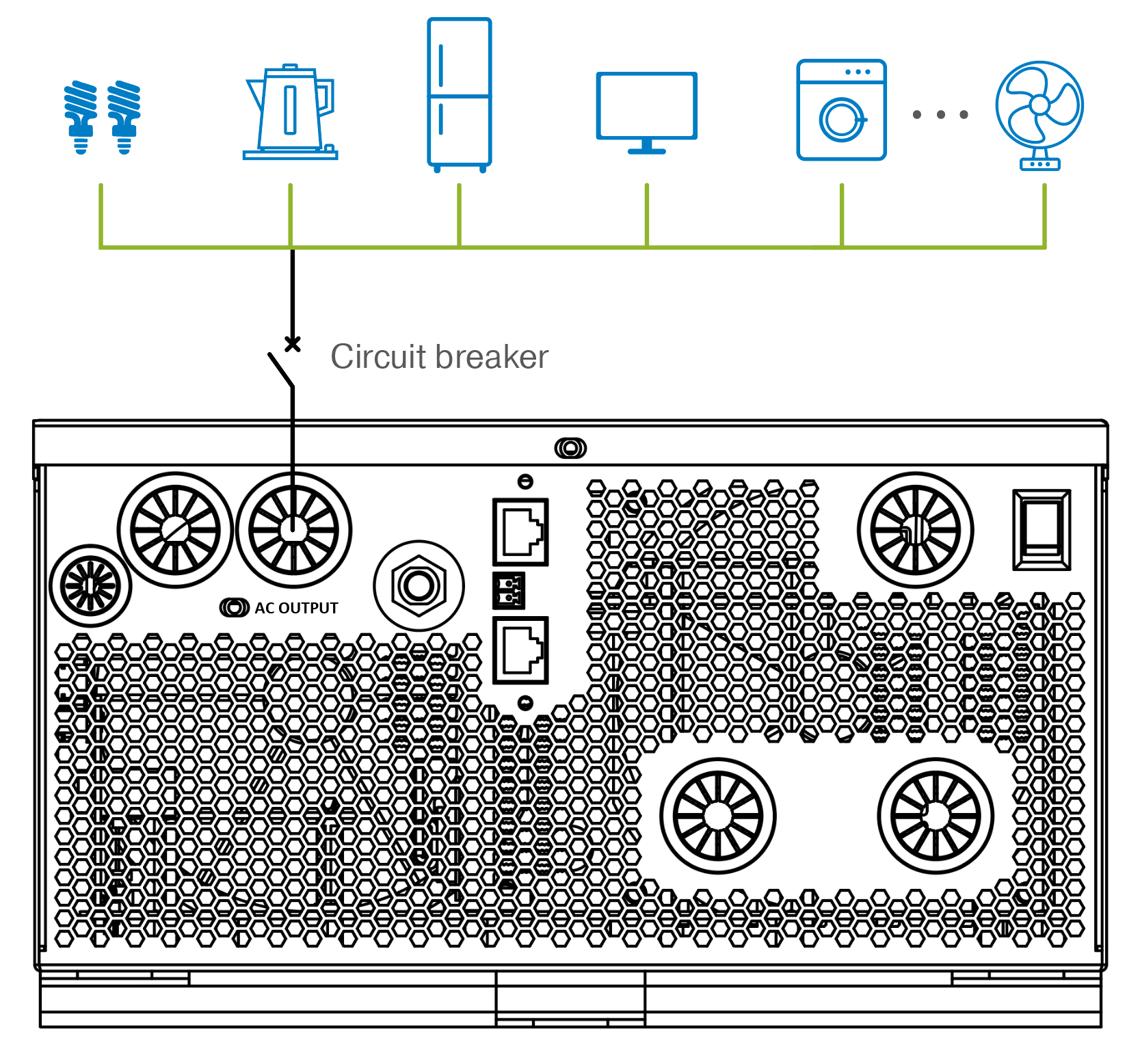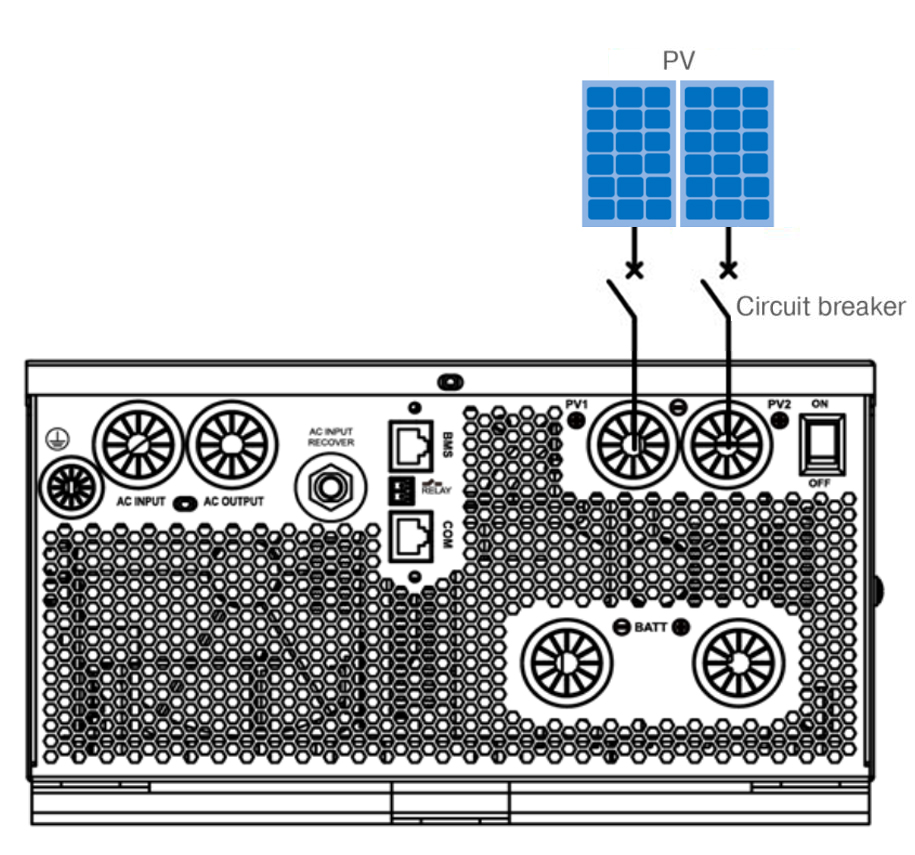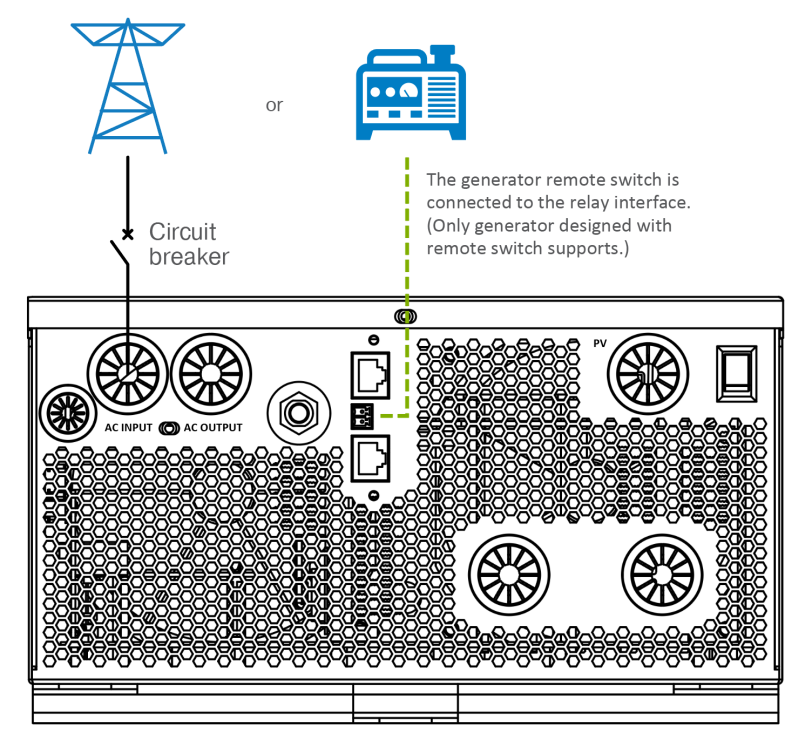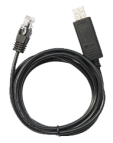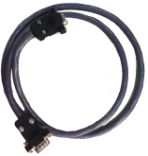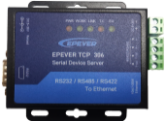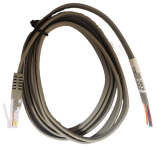Introduction to HP Series 20SA
This upgraded inverter charger HP Series 20SA, is engineered for optimal energy capture, conversion and management. The IP20 protection rating provides defense for the equipment, preventing the entry of solid objects with a diameter greater than 12.5 millimeters. It is suitable for general indoor environments.
This type of inverter charger supports solar charging, utility charging, oil generator charging, bypass output, inverter output, and energy management. This means more effective and adaptable energy management for you, with reduced waste thanks to its automatic standby feature that activates when solar power or grid power is unavailable. Some models support 2 PV inputs, enhancing the efficiency of PV utilization.
It supports parallel operation for multiple units (12 units in standard application, more than 12 units need to be customized) in single phase and three phase, with 220VAC single phase or 380VAC three-phase AC output.
The MPPT tracking technology can fast-track the PV array’s maximum power point in any sunlight conditions and obtain the maximum energy in real-time.
The product incorporates a DSP chip with an advanced control algorithm, resulting in rapid response times and enhanced conversion efficiency. PFC technology improves power factor and reduces the demand on the electrical grid capacity. The built-in BMS-Link module enables safe charging and discharging control for lithium batteries.
Ease of use is also a key feature, with integrated technology for straightforward monitoring and management. Optional upgrades like 4G and WiFi modules are available for remote system adjustment and control, providing you with the convenience of managing your power needs from your smartphone or tablet.
Product Naming Convention
Our product model names are structured to give you quick insight into the features and specifications of each device. HP Series 20SA is a more concise way of expressing it, and its full name is HP-AHP20SA.
Let’s break down the model HP3542-AH0650P65:
- HP Series: The prefix ‘HP’ indicates the series.
- 35: This number represents the inverter’s rated power in hundreds of watts. Here, “35” translates to a rated power of 3500 watts or 3.5 kilowatts.
- 4: Following the series indicator, the first single digit “4” denotes the nominal battery voltage. In this case, “4” signifies a 48V system.
- 2: The second single digit “2” reveals the inverter output voltage. “2” corresponds to an output of 220/230VAC, suitable for many household and commercial applications.
- AH: This section of the model name stands for the type of technology used, with “AH” indicating the use of an Asynchronous High-frequency transformer, which provides efficient energy conversion.
- 06: The next two digits “06” represent the maximum charging current times ten. Therefore, “06” indicates a maximum charging current of 60 amperes.
- 50: Similarly, the digits “50” indicate the maximum open-circuit voltage of the photovoltaic (PV) input times ten. Hence, “50” refers to a PV input voltage of up to 500 volts.
- P20: It represents the IP20 protection rating, which is placed after the “50” as a whole for better understanding.
- SA: It means this type is primarily designed for the South African market.
Key product features
The HP Series 20SA supports 2 operating modes: it can function with or without a battery, featuring a stable lithium battery self-activation function for enhanced versatility.
Lithium battery communication port to perform safe charging and discharging. Charging is managed through a three-stage process: bulk, boost/equalize, and float charging, to ensure the battery’s charging cycle is safe and efficient.
In converting DC to AC power, the HP Series 20SA employs SPWM technology to deliver pure sine wave output, making it ideal for a wide range of AC loads, including household appliances, power tools, and other electronics.
For solar charging, it boasts advanced MPPT tracking technology with a peak tracking efficiency of over 99.5%, enabling it to swiftly identify and follow the maximum power point of PV arrays under varying conditions. This maximizes energy harvest from solar panels in real-time.
The incorporation of PFC technology optimizes energy usage by improving the power factor, thus easing the load on the power grid.
Multiple LED indicators show system status in real-time. Large-sized LCD screen provides a clear and comprehensive display of system operations and status, enhancing user interaction.
Battery voltage controls the dry contact to turn on/off the external equipment.
It is compatible with both non-inverter generators and inverter generators, providing users with greater flexibility and choice.
Product details
I. Working modes
- Battery mode
- No battery mode:
Scenario A: Both PV and utility are not available
① If any of the following is satisfied, the battery supplies the load.
- The battery voltage is greater than or equal to the LVR value.
- The battery SOC is greater than or equal to the LER value.
② If any of the following is satisfied, the battery stops supplying the load.
- The battery voltage is lower than or equal to the LVD value.
- The battery SOC is lower than or equal to the LED value.
LVD: Low Voltage Disconnect Voltage
LED: Low Energy Disconnect SOC
Scenario B: PV is available, but the Utility is not available.
① When the PV power is greater than the load power, the PV charges the battery and supplies extra power to the load.
② When the PV power is lower than or equal to the load power, the PV will not charge the battery, the battery will cut in to supply power to the load together with the PV.
II. Battery types
The HP Series 20SA is designed to offer a high degree of flexibility in energy storage and management by supporting a range of battery types. This compatibility ensures that users can select the best type of battery according to their specific energy requirements, operational environment, and budget. The supported battery types are:
- Lithium-Iron Batteries: Known for their high energy density and long life, these batteries are ideal for applications requiring lightweight and efficient energy storage solutions. The HP Series 20SA includes a communication interface specifically for lithium batteries, enhancing safety through precise charge and discharge control.
- Lead Acid Batteries: This category includes AGM (Absorbent Glass Mat), GEL, and FLD (Flooded) types, which are widely used for their reliability and cost-effectiveness. AGM is the default type due to its maintenance-free nature and good performance across a range of conditions. Lead-acid batteries with the HP Series 20SA benefit from automatic temperature compensation, which adjusts the charging voltage based on temperature changes to ensure optimal charging.
- Sealed and Flooded Batteries: Sealed batteries are typically maintenance-free, while flooded batteries may offer a longer lifespan and are often more economical. Both types can be used effectively with the HP Series 20SA, allowing for flexibility in system design and maintenance.
III. Communication:
The HP Series 20SA features an advanced RS485 communication port designed with isolation to enhance system reliability and operational safety. With the flexibility to be equipped with additional connectivity modules such as 4G and Wi-Fi, the HP Series 20SA provides the convenience of remote monitoring. This means users can easily track and manage their system from a distance, whether through a PC interface or a dedicated smartphone application. The default communication parameters for the COM port, 115200bps, 8N1, ID=10, are preset as default but can also be customized to fit specific needs or network configurations.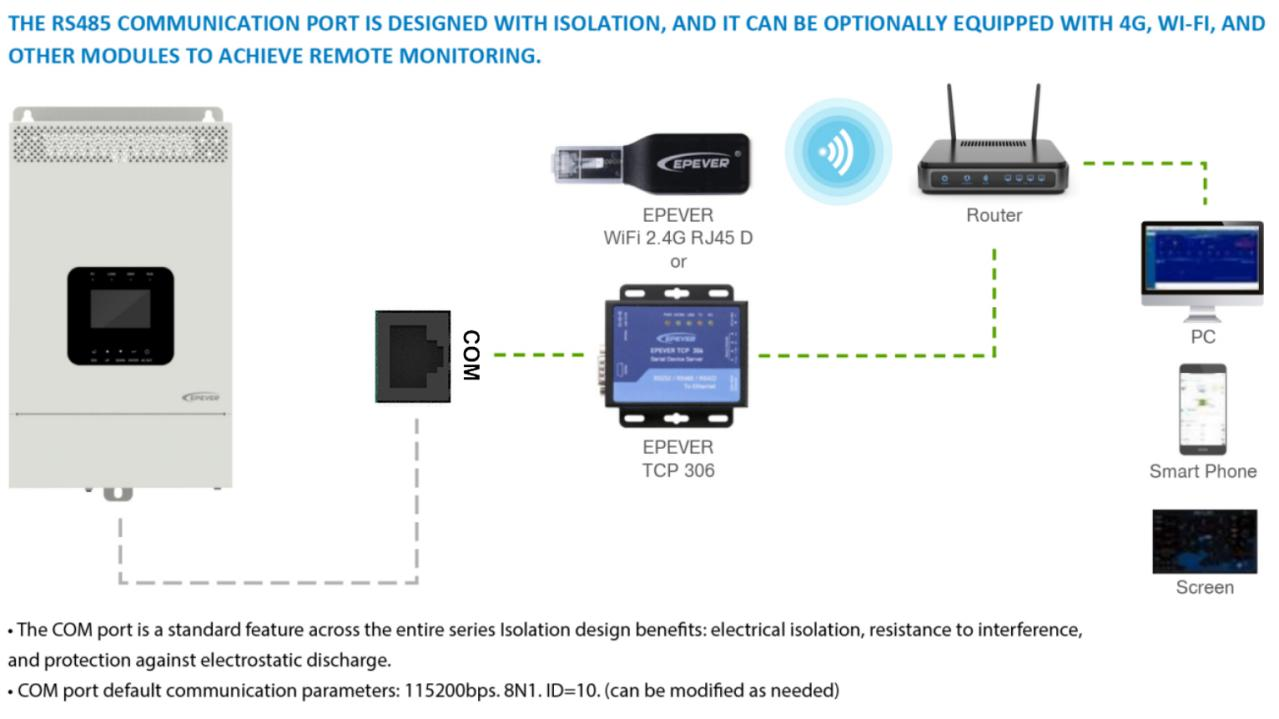
IV. Lithium battery communication interface
Equipped with a specialized lithium battery communication interface, the HP Series 20SA enables precise control over the charging and discharging processes of lithium batteries, ensuring their longevity and safety. The integration with Battery Management Systems (BMS) allows for the real-time display and management of battery parameters, which enhances the accuracy and timeliness of charging cycles and protects against potential issues. The communication port is isolated to prevent electrical interference.
Certificates and Protection:
Designed by international certifications such as IEC 62109, EN 61000, RoHS, etc.
Comprehensive electronic protection features:
Equipped with complete automatic protection functions such as overcharging, over-discharging, reverse PV connection, overvoltage and Undervoltage of the utility grid, output overload, short circuit, etc., to ensure the reliability of system operation to the maximum extent.
LCD Screen
The LCD screen allows monitoring of all system operating status, real-time data time and date, historical faults, software and hardware versions, etc.
All control modes and parameters can be set through the LCD screen, including PV, load, utility power, battery parameters, basic parameters, system parameters, time, password, and others.
It features a one-touch factory reset function.
The AC OUT button provides one-touch control of the AC output.
Connection diagram
In this section, we look into the connection and wiring configurations of the HP Series 20SA inverter/charger system, which is designed to operate effectively with or without batteries. This flexibility is crucial for various applications, allowing the system to be tailored to the specific needs of the user, whether it’s for immediate power supply or for a setup that includes energy storage.
The system can be directly connected to a PV array, utilizing an MPPT Charger to optimize the power conversion from the solar panels, regardless of the availability of batteries. This means that in the absence of batteries, the system can still convert and supply solar energy directly to your household appliances and other AC loads.
Alternatively, when there is insufficient sunlight or at night, the system can switch to receive power from a utility grid or an external generator. This ensures a continuous power supply to the connected loads, making it a reliable power solution for any situation.
For users requiring energy storage, the second setup includes a battery configuration. The HP Series 20SA inverter/charger intelligently manages the energy by charging the batteries when excess pow/56er is needed.
In both setups, the LCD panel provides interactive monitoring, giving users the convenience of tracking their system’s performance and status at a glance.
These connection diagrams demonstrate the HP Series 20SA system’s adaptability to various power generation and storage scenarios, ensuring that users have a versatile and robust power management solution.
Appearance and Wiring
The HP3542-AH0650P65 is an advanced and reliable inverter/charger, designed with various features that cater to diverse power requirements. It is equipped with a range of connectors and controls to ensure ease of use and efficiency. Each part of the unit is thoughtfully crafted to make managing and using the system straightforward, ensuring that it can be operated smoothly in any setting. Here is a brief guide to the key components of the HP3542-AH0650P65, which combine to deliver a powerful and user-friendly energy solution.
I. HP3542-AH0650P65 Appearance
The inverter/charger has a dedicated grounding terminal, which must be grounded reliably. The grounding wire size must be consistent with the recommended load wire size. The grounding connection point shall be as close as possible to the inverter/charger, and the total grounding wire shall be as short as possible.
| No. | Instruction | No. | Instruction |
| 1 | LCD | 7 | Dry contact interface |
| 2 | Grounding terminal | 8 | RS485 port (RJ45, with isolation design) 5VDC/200mA |
| 3 | AC input port | 9 | PV terminals |
| 4 | AC output port | 10 | Power switch |
| 5 | Utility over-current protector | 11 | Battery terminals |
| 6 | BMS port | 12 | Parallel connection interface |
- LCD: The user-friendly screen allows users to easily adjust and monitor system parameters.
- Grounding terminal: The grounding terminal is a crucial component in electrical systems, providing a safe pathway for electric currents to flow into the ground in the event of a fault or electrical surge.
- AC input port: This interface links the inverter charger with utility power or a generator, permitting AC power input from these sources and guaranteeing a consistent power supply.
- AC output port: It delivers the converted AC power from the inverter/charger to various electrical devices and appliances.
- Utility over-current protector: Its primary function is to detect and interrupt current levels that exceed the predetermined and safe operating limits, preventing damage to equipment, mitigating fire hazards, and ensuring the overall reliability of the electrical system.
- BMSport: Through a BMS port, different lithium battery manufacturers’ BMS protocols can be converted into our company’s standard BMS protocol. In addition, it realizes the communication between the inverter/charger and the BMS.
- Dry contact interface: The dry contact interface is connected with the generator switch to turn on/off the generator. It can be used in parallel with the oil engine switch.
- RS485 port: Connecting with the RS485 port, an optional 4G or WiFi module can remotely control the inverter/charger.
- PV terminals: The PV terminals serve as connection points for solar panels, streamlining the incorporation of photovoltaic energy into the system. This design facilitates the efficient capture and utilization of solar energy, enhancing the system’s energy harvesting capabilities.
- Power switch: The device features an integrated power switch, granting convenient control over the system’s power supply. Beyond providing user-friendly operation, this switch allows for swift power disconnection during maintenance or emergencies, ensuring the secure operation of both the system and devices.
- Battery terminals: The battery terminals provide reliable connection points for linking the battery bank. Engineered for secure and stable battery connections, these terminals ensure the required energy storage for the system, offering continuous energy support during peak demand or power outages.
- Parallel connection interface.
II. Wiring
① Grounding
The inverter/charger has a dedicated grounding terminal, which must be grounded reliably. The grounding wire size must be consistent with the recommended load wire size. The grounding connection point shall be as close as possible to the inverter/charger, and the total grounding wire shall be as short as possible.
② Connect the battery
④ Connect the PV modules
⑤ Connect the utility or generator
Scenarios: Bringing Convenience to Remote Communities
In this section, we explore a practical scenario: a use case of a typical household utilizing the HP3542-AH0650P65 as an example of a power management solution. Given the consumption data presented in the table, we see how this inverter/charger can effectively meet the daily energy needs of a home. Consider the following daily power usage for a range of common household appliances: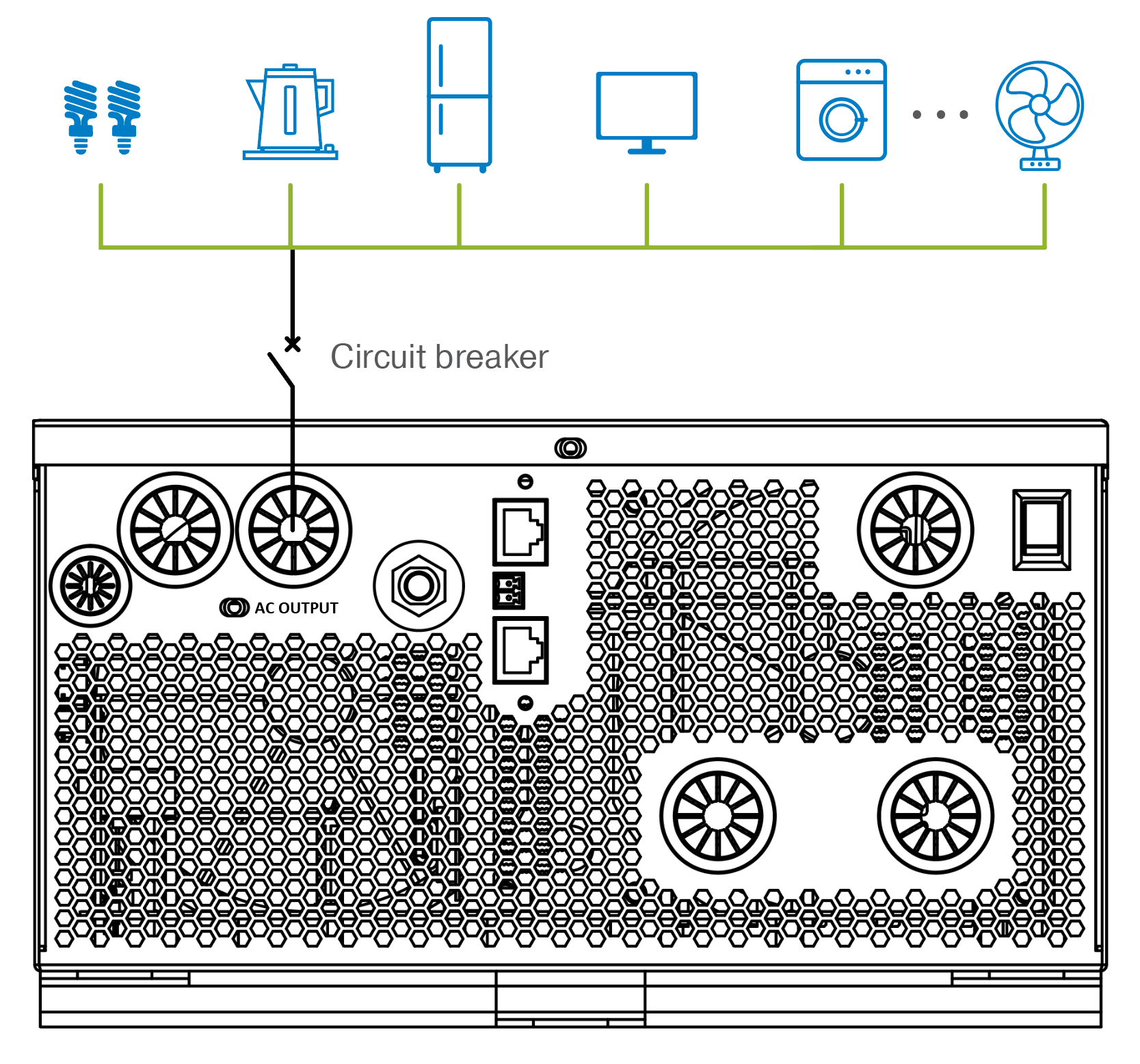
| Appliance | Average Power Consumption (Watts) | Hours Used Per Day | Hours Used Per Day |
| Washing Machine | 500 | 1 | 500 |
| Television | 100 | 5 | 500 |
| Tea Machine | 1200 | 0.5 | 600 |
| Refrigerator | 150 | 24 | 3600 |
| Lamp | 40 | 5 | 200 |
| Fan | 50 | 8 | 400 |
The total daily consumption amounts to 5800 Watt-hours. It is not only capable of running these appliances simultaneously during peak hours but also ensures their operation is sustained throughout the day when connected to a suitable battery bank. This scenario demonstrates the ability to provide a reliable power supply to a household, guaranteeing that daily routines.
Accessories
HP Series 20SA series is complemented by a range of accessories designed to enhance functionality and provide comprehensive energy management solutions.
Here is a thorough overview of the available accessories:
Optional Accessories
Conclusion
HP Series 20SA, this innovative solar power hybrid inverter charger is more than just a device; it’s a gateway to a future powered by versatility, sustainability, and reliability. Whether you’re in a remote community, looking for a dependable power backup solution, or simply seeking energy independence, this all-in-one wonder delivers on all fronts. The possibilities are boundless, and the choice is yours.
Visit the product page of HP Series 20SA to explore more.
Source: https://www.epever.com/get-to-know-hp-series-20sa-solar-inverter-charger/


